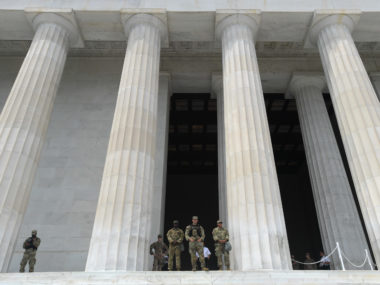Guest post by Zachary C. Steinert-Threlkeld
Working with events data has long posed a fundamental dilemma. On one hand, the events one wants to study – state-sponsored killings, battles in a war, or protests, for example – have a complex, intertwined nature that requires either detailed case studies or detailed hand-coding of the events. On the other hand, gathering such detailed coding makes it difficult to analyzes events in different time periods or places, a problem for those interested in creating generalizable theories. Scholars preferring the latter approach – coding many events in different locations at different times – have relied on computer-generated events data, with newspapers providing the raw material for the events data.
The Global Database of Events, Language, and Tone (GDELT) is the most recent computer-generated events database and has received some attention concerning the accuracy of its coding. In a post on this blog, Nicholas Weller and Kenneth McCubbins recently raised concerns about GDELT’s coding process, actor coding, and news sources, and a post on the blog BadHessian finds minimal overlap between GDELT and the Dynamics of Collective Action dataset.[1] This post analyzes GDELT’s data from three different angles to argue that computer-generated events data is quite accurate, so long as one’s goal is not to measure the True number of events for one’s study. GDELT’s recording of Arab Spring protests compares favorably to hand-coded events dataset, and a cross-sectional comparison of GDELT’s protests figures matches actual events during the Arab Spring.
One concern is that events data, including GDELT, will have high variance. Newspapers may underreport events when the topic is not sexy and overreport once the event dominates the news cycle. This does not appear to be the case with GDELT during the Arab Spring. Looking at protests recorded in Egypt and the United Arab Emirates from November 1st, 2010 through the end of 2011, GDELT clearly has records for protests on days when Western media were not focusing on the Arab Spring, especially before the start of major protests in Egypt on January 25th. While all the records come from news articles, the ones before January 25th probably come from sources more focused on, and therefore providing more accurate tallies of protest in, the Middle East and North Africa. In other words, the news sources GDELT follows appear to have broad enough coverage to not bias events to just periods when those events become recognized by Anglo-Saxon newspapers. The extensive temporal recording of protests suggests that subsequent increases in recorded protests are true protests and not the result of having more reporters in those countries.
Second, Figures 1 and 2 demonstrate that GDELT records different levels of protest in countries that did have different levels of protest. Figure 1 plots the protests to events ratio in Egypt, Figure 2 for the United Arab Emirates, both at the country level. (Protests were chosen as any event with a GDELT EventRootCode equal to 14.) Dividing the specific event of interest (protests) by the all events recorded ensures that any observed increase in the specific event is not an artifact of the sudden attention from news media that event receives. The figures show that GDELT records protests every day in Egypt, a high activity country, and almost every day in the United Arab Emirates, which experienced very little unrest. The data also shows spikes in protests around days that are understood to have experienced a lot of protest, and these spikes occur only around relevant events for Egypt and the United Arab Emirates. For example, Egypt experiences no uptick in protests when Tunisian President Ben Ali flees, but subsequent protests clearly track major events. The chart for the UAE shows some evidence of heightened protest activity, but none appear to track the events in Egypt.
Third, I have compared GDELT’s protest counts to turnout at organized demonstrations, spontaneous demonstrations, organized violent riots, and spontaneous violent riots as recorded in the Social Conflict in Africa Dataset (SCAD). SCAD is a hand-coded events dataset of major conflictual events in Sub-Saharan Africa from 1990-2011. Because SCAD focuses on Africa, the charts below are limited to protests in Morocco, Algeria, Tunisa, Libya, and Egypt. SCAD’s number of participants measure ranges from 1-7 in increments of powers of 10 (0-9, 10-100, 101-1,000, etc.). Figure 3 shows the correlation between number of protests in a country with the number of protestors at organized demonstrations, spontaneous demonstrations, organized violent riots, and spontaneous violent riots. Figure 3 is for events SCAD identifies as having occurred nationwide, Figure 4 for those only at the city level.
Both charts demonstrate a positive correlation between how many protests GDELT records and how many participants SCAD records. GDELT does not attempt to measure protest turnout, and SCAD does not record enough events to compare to GDELT. Assuming that more protests in a day correlates with more people protesting that day, this comparison is as close a validation to GDELT as possible. Moreover, the construction of the SCAD turnout measure reduces the possibility of finding any correlation because it compresses whatever the “real” level of turnout was to identical or very similar values. (To be fair, SCAD does this because measuring turnout is imprecise and articles report conflicting, very different, values.) Any resulting association found can therefore be interpreted as a worst-case estimate of the correlation between the two measures.[2]
The Arab Spring was one of the most reported events of 2011, and it caught most observers by surprise. If any news-based events dataset, including GDELT, is likely to misreport events, protests during the Arab Spring therefore seem like as good a candidate as any. That GDELT appears to have accurately captured protest behavior during the Arab Spring, at least as much as can be expected without having infinite coding resources, is reassuring to those who make use of computer-coded events data. No one will ever know precisely how many distinct protests occurred in Egypt on January 25th or Sana’a on January 27th, much less how many protestors participated. It appears, however, that we can trust machine-coded reports of these events in our research.
Zachary C. Steinert-Threlkeld is a PhD candidate in the Department of Political Science at the University of California – San Diego.
A version of this post first appeared on the author’s blog.
[1] There also appear to be some legal concerns about copyright surrounding GDELT. This post has nothing to do with that issue. This post merely shows that the data GDELT produces, ignoring whatever its legal status currently is, are usable in academic research. [2] GDELT eliminates all records it creates that have the same values for date, source, target, and event, removing about 20% of initial observations. When these duplicates are found, the event’s values for number of articles, number of mentions, and number of sources are updated. The remaining rows should therefore each represent unique protests (or whatever event in which the research is interested).










3 comments
To clarify: because derived data on “facts” do not inherit the copyright of the materials used to code them — and if this were otherwise, all data sets, human or machine coded, would be questionable — the issue with GDELT is not with copyright, but rather whether the source materials have been fully and correctly identified. There is also some sort of on-going investigation of Leetaru by the University of Illinois, and about a month ago he lost an appeal where he was attempting to stop this:
http://www.state.il.us/court/OPINIONS/AppellateCourt/2014/4thDistrict/4130465.pdf
so additional issues might emerge (or, conversely, Leetaru might be fully vindicated, which he claims on his blog is already the case, a claim which is difficult to reconcile with the public records of on-going litigation). Ironically, if at least some of the claims that are being made by the Cline Center at Illinois are correct, GDELT is actually based on a better set of source texts than were originally claimed, but incorrectly representing sources is still a serious violation of professional practice. The current data from the daily updates — from April 2013 — include source URLs so the source is unambiguous: the issue is the earlier data and whatever issue is involved in the Illinois investigation.
“GDELT eliminates all records it creates that have the same values for date, source, target, and event, removing about 20% of initial observations. When these duplicates are found, the event’s values for number of articles, number of mentions, and number of sources are updated. The remaining rows should therefore each represent unique protests (or whatever event in which the research is interested).”
Unfortunately GDELT misses many repeated cases. In some cases, 2 events have the exact same source URL but the event is coded differently so in one event the actor1 is listed but not actor2 while in the other event actor2 is listed but not actor1 so it fails to drop these cases -not to mention the thousands of events that are derived from the exact same news report but coded from different source URLs.